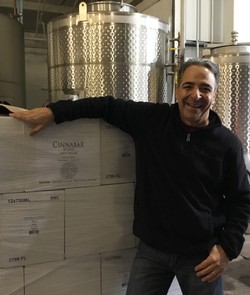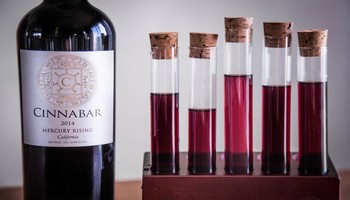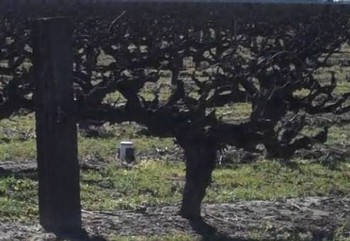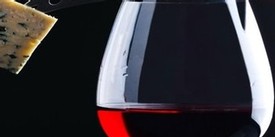In the Cellar with George
 Welcome to In the Cellar with George, a blog in which Cinnabar Winemaker George Troquato shares his insights on wine, wine making, viticulture, and more.
Welcome to In the Cellar with George, a blog in which Cinnabar Winemaker George Troquato shares his insights on wine, wine making, viticulture, and more.
One could say that farming is in George's blood. He began helping his father at Troquato Vineyards in 1985 after graduating Cal Poly with a degree in crop science, before gaining experience working in the cellar and later in the Beaujolais region of France. He has a profound understanding of winemaking—from the vineyard to the glass.
Read more about George's winemaking philosophy.
The Secret is in the Blend

In light of our upcoming blending seminars, I want to discuss why winemakers produce blends. We do it to create wines with added depth, character, flavors, and nuances. Historically, American wines were mainly single varietal, as people tended to believe that a wine made from say 100 percent Cabernet Sauvignon was "better quality" and that blending was done to correct “flaws." But in the Old World, blends have been a common style for decades. For example, Bordeaux, Rioja and Chianti wines are all blends governed by region.
The U.S. wine industry has long since changed its conventional thinking, now producing some of the world's best non-conventional blends.
I enjoy creating blends because I believe that the sum of the parts is greater than its whole. People often tell me that they like blends because the wines seem more complex. In general this is true. Cabernet Sauvignon can be rather tannic, so adding Merlot provides suppleness mid-mouth. Blending Cabernet Franc into Cabernet Sauvignon provides aromas, spice, and structure. Adding Syrah to Cabernet Sauvignon gives the wine more volume and mouthfeel. The synergy between varietals can transform a wine. This is especially true when blending Petite Sirah into Zinfandel—a match made in Heaven. Zinfandel provides red fruit character while Petite Sirah imparts black fruit and tannin, elevating the fruit mid-mouth, and giving the wine richness and structure.
I look forward to seeing you at our Blending Seminars!
Cheers,
George Troquato, Winemaker
Winter in the Vineyard

Winter is a quiet time in the vineyard—the vines are dormant, which is the best time for pruning. Regular annual pruning is vital to the health of the vine and helps to control vigor, allowing the vine to produce quality fruit. The main objective is to produce a balanced vine so that dappled sunlight can enter the canopy just enough to ripen the fruit. As a general rule, we need 10 to 14 leaves per cluster of fruit on each cane or branch. There’s more to pruning, however, than a “snip” here and a “snip” there. Pruning takes skill. There are three main pruning methods for wine grapes:
- Head-trained spur pruned (vines trained to a wooden stake) is the earliest for older vineyards, such as Old Vine Zinfandel (shown here), and encourages low-production, high-quality grapes.
- Cane pruning is the most time-consuming and requires the most skill. Cane pruning can offer better frost protection than other methods due to the amount of buds remaining, along with potentially higher cluster counts.
- Spur pruning involves removing the new one-year-old wood growing from the spurs of a cordon (a horizontal shoot), leaving one to three buds on each spur.
Whichever pruning method is used, careful, accurate, and consistent execution is required to maximize both the quality of fruit and the yield.
Cheers,
George Troquato, Winemaker
